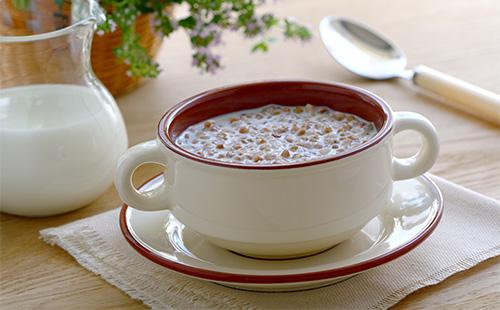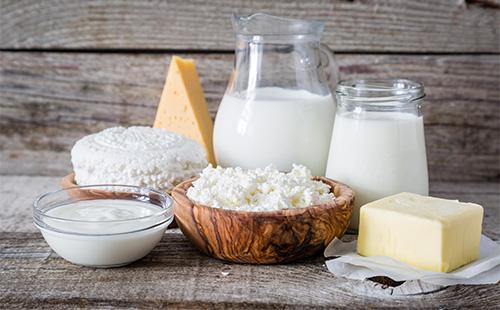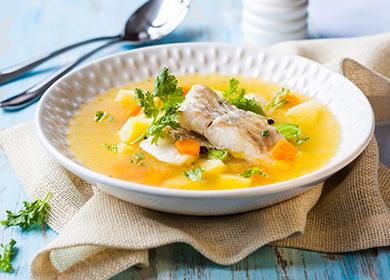The content of the article
The basis for all tables according to Pevzner is the same, only some products are suitable, suitable or not suitable for consumption, depending on the specifics of the disease.
The medical diet No. 1 has several varieties - with a "bias" in the individual stages of gastritis and ulcers. So, diet No. 1a involves sparing the digestive tract by reducing the mechanical friction of food on its walls. She is prescribed in the acute stage of the disease. A table number 1b is designed for a period of relative "attenuation" of symptoms. It no longer requires the mandatory grinding of everything that is served to the patient.
The basics of clinical nutrition
All tables developed by Pevzner require the following rules to be selected, processed and served.
- There are often and little by little. Three meals a day with gastrointestinal pathologies is irrelevant. You need to eat five or more times a day, but the portion size should not exceed 300 g.
- Cook simple dishes. Sophisticated dishes (more than four components, including dressing) are not welcome. The more complicated the recipes, the greater the problems with calculating the calorie content of the final product, the balance in it of proteins, fats and carbohydrates (BJU). The digestive tract also breaks down food with a diverse chemical composition longer and worse than with a simple one. Especially when it comes to combining within one dose two different types of protein or fat (animal and vegetable at the same time).
- There is only warm. Pevzner's nutrition systems require only warm dishes to be served on the table - including the first and tea, which are usually consumed hot. Ice cream is allowed only in some of them, but it is also impossible to eat ice cream - first you have to melt it.
- Comply with prohibitions. Recommended dietary products should be 98-99% of the daily diet for the entire period of compliance. Excluded products can be entered no more than once a week in an amount up to 100 g per day. But only after at least three days from the appearance of improvements.
- Chop food. In the acute stage of a serious digestive tract disease, the patient is usually shown complete hunger on the first or second day in combination with intravenous injections of nutrients. The next few days, all products absorbed by him are wiped to a state of gruel. “Sukhatyatka” is also excluded during this period - even buckwheat should be diluted with water, milk to a suitable consistency. The condition to wipe or not to wipe the food, mainly distinguishes the options for the first diet "a" and "b". Further choice of diet depends on the speed and severity of improvements.
- Discard spices. Gustatory irritants and artificial digestive stimulants like vinegar, horseradish, cinnamon, aromatic herbs and spices are incompatible with pathologies of the digestive tract.
- Give up frying and grilling. Frying as a heat treatment method creates hard crusts that cannot be crushed. The fats contained in the product oxidize during frying, forming a carcinogenic oxycholesterol - a special, very “bad” type of fat. Cooking on the grill without oil does not make them safer.
Diet requires drinking plenty of fluids.The patient is not required to set records for daily absorption of water, but to give the food mass a normal consistency, it is needed.
The choice of drinks for the day depends on the purpose of the diet and its number. If it is designed to lower the high acidity of the stomach, drinks should be alkaline or neutral, but not acidic at all. If you need to increase it, tea with lemon, compote from lingonberries and black currants will be useful to the patient more than Borjomi.
Indications and limitations of the first table
A series of tables according to Pevzner was created in an era when the problem of obesity of mankind was not yet so acute, cellulite was not considered a pathological form of fat deposition, and the "fashion" in proportion throughout the world (not only in the USSR) was different. Therefore, the purpose of appointing treatment table No. 1 is not body shaping, but maximum digestion relief.
The developer proceeded from the proven and repeatedly verified "specialization" of the digestive organs, according to which proteins are broken down mainly in the stomach, and fats in the intestine. Digestion of carbohydrates begins in the mouth (simple carbohydrates from food secrete the enzyme saliva ptyalin), and ends - also in the duodenum. The balance of proteins, fats and carbohydrates in diet No. 1 is changed in accordance with the characteristics of digestion, and the result does not look too useful for the figure.
- Squirrels. There are only 100 proteins per day. This is not only not enough for sports professionals, but also losing weight on a combination of diet with physical activity or even just “friends” with an active lifestyle. The good thing is that emphasis is recommended on animal proteins, since plant proteins are not complete and do not replace them.
- Carbohydrates. But carbohydrates on diet No. 1 can be eaten four times more - to unload the stomach (with inflammation or ulcer, there is still no other solution).
- Fats. The content of vegetable and animal fats in her daily diet is also provided for high - up to 100 g per day, there should be more animal fats.

Products
Diet number 1 allows the following products:
- light and lean meat - bird, veal;
- a fish - any, except smoked, canned and fried;
- meat and fish offal - including liver, tongue, caviar;
- bread- yesterday’s wheat and biscuits;
- soft grain pasta and cereals - buckwheat, rice, oatmeal, semolina;
- soft vegetables with soft flesh - tomatoes, potatoes, pumpkin, carrots, beets, cauliflower, zucchini;
- the eggs - excluding raw and fried;
- all fermented milk products - but the cheese is only mild;
- fruits- sweet;
- the drinks - tea and cocoa, compote, juice and jelly.
Prohibited for patients with gastritis and ulcers:
- fatty and tough meat - pork, lamb, beef;
- smoked and fried - as well as semi-finished products from the store, brains and lard, bacon;
- bakery products- fresh biscuits, pastries, bread;
- hard cereals — corn, wheat, whole oats, millet;
- fiber, sharp vegetables - eggplant, white and red cabbage, cucumbers, radishes, onions, lettuce, mushrooms;
- sauces - mayonnaise, ketchup, vinegar and mustard;
- cheese - sharp;
- kefir - older than two days;
- citrus - as well as apples of sour varieties and berries;
- the drinks - coffee, soda.
Table No. 1 does not make a strict distinction between white and black bread - only between the degrees of its freshness. But with high acidity, Ukrainian and Borodino bread usually do not want to eat - it is too sour.Along with semi-finished products, diet No. 1 excludes products whose existence the author himself did not foresee, since they did not exist. Assessment of their impact on digestion and metabolism was already given by modern gastroenterologists, as they spread to the post-Soviet space. This is about:
- chips;
- crackers;
- snacks;
- onion and corn rings;
- ready-made cheese and curd masses;
- cream cheese;
- mixtures-imitations of tastes (seasoning "tasteful" of bacon, smoke, barbecue, cheese);
- "Crab", "cheese" oil;
- crab sticks;
- "Snacks" and pastes for spreading on bread.
Even manufacturers and invited expert chemists cannot always decipher their composition. It includes natural, but hazardous to health components that are not related to food. Among them are hydrogenated (spread - “solid” vegetable oil) or inedible (palm oil) fats, thickeners (carrageenans - wood resins), preservatives (often toxic, like formaldehyde and sodium nitrite).
Diet
Table No. 1 as a whole requires far less restrictions on suitable products than its “relatives”, intended for the treatment of the pancreas, liver, where patients have to eat for months with dishes from a dozen of the same ingredients, without the slightest “glimpses” of variety. An approximate menu of the first diet for the week may be as follows
Monday
- First breakfast. Oatmeal Puree. Ground boiled chicken diluted with broth.
- Lunch. Two bananas.
- Dinner. Warm vegetable smoothie. Mashed potatoes. Fish steamed meatballs with sour cream.
- An afternoon snack. Two to three sweet biscuits with milk or tea.
- First dinner. Buckwheat porridge. Braised veal with vegetables.
- Second dinner. Kefir.
Tuesday
- First breakfast. Braised zucchini. Boiled chicken. Cottage cheese, whipped with cream, raisins and fruits.
- Lunch. Two to three non-acidic fruits (chopped).
- Dinner. Milk soup with grated oatmeal, strawberries and banana. Rice porrige. Chicken meatballs.
- An afternoon snack. Dried cookies with a drink to choose from.
- First dinner. Salad of boiled beets, prunes and chicken with sour cream. Mashed potatoes.
- Second dinner. Milk.
Wednesday
- First breakfast. Steamed vegetables with meat. Rice porrige.
- Lunch. Puree fruits.
- Dinner. Ear with potatoes, carrots and chopped fish. Beef tongue with sour cream sauce. Buckwheat.
- An afternoon snack. A cocktail of milk and fresh fruits (can be with sugar).
- First dinner. Vermicelli under a cheese "coat". Two soft-boiled eggs.
- Second dinner. Ryazhenka.
Thursday
- First breakfast. Salad of boiled carrots and fresh banana under yogurt. Curd paste (a mixture of sour cream, cottage cheese and raisins).
- Lunch. Fruit smoothie.
- Dinner. Mashed potato and cauliflower soup. Liver or meat pate. Semolina.
- An afternoon snack. Tea with sweet crackers.
- First dinner. Chicken baked with peeled apples. Salad of boiled pumpkin and carrots with sour cream.
- Second dinner. Milk.
Friday
- First breakfast. Meatloaf (baked or boiled). Beetroot and tomato salad (without skin).
- Lunch. Sliced Melon.
- Dinner. Buckwheat soup with carrots on beef broth, with meat. Carrot cutlets. Semolina pudding with raisins.
- An afternoon snack. Compote with biscuits.
- First dinner. Homemade dumplings. Cottage cheese and sour cream mousse with fruit.
- Second dinner. Kefir.

Saturday
- First breakfast. Cauliflower (only inflorescences) breaded with breadcrumbs with sour cream or cream. Mashed vermicelli with milk.
- Lunch. Fruit salad with sour cream or yogurt.
- Dinner. Vegetable soup. Braised chicken hearts in sour cream sauce. Mashed potatoes.
- An afternoon snack. Marshmallows or marmalade.
- First dinner. Beetroot salad. Casserole with peeled apples.
- Second dinner. Milkshake.
Sunday
- First breakfast. Steamed omelet with cheese and minced meat. Freshly chopped fruits to choose from.
- Lunch. Any drink with biscuits / biscuits soaked in it.
- Dinner. Rice soup with carrots, tomatoes and minced chicken. Curd pudding with raisins.
- An afternoon snack. Banana and pear puree.
- First dinner. Steamed vegetables with meat.
- Second dinner. Kefir.
It is necessary to complete each meal by drinking a glass of tea, still mineral water, herbal broth or even juice (choice in accordance with the doctor’s recommendations). All drinks must be consumed in a warm form, adding sugar and cream to their taste without restrictions. Whole components (tea leaves, plant fibers, pieces of fruit, berries) should be filtered.
Reviews
I had gastritis for about a year. With the help of medications alone, it can not be cured. Need a diet. So the doctor wrote to me exactly Medical Diet No. 1. I sat on it for six months. During this time, I managed to lose 9 kg (my weight is not very big) and completely cure gastritis. I followed a strict diet, but the last two months, when my condition improved much, I began to eat sweets little by little. The diet is very good, you really are full of it. Fried, greasy and other harmful effects are completely excluded. It was difficult to refuse a cucumber, because I love it very much. Yes, and I wanted raw vegetables. But now everything is fine)
Liza, http://diet.neolove.ru/therapeutic_diets/meditsinskaja_dieta_1.html
A gastroenterologist recommended this diet. I have a hernia of the esophagus and chronic gastritis, therefore, bile is constantly being thrown into the stomach and esophagus, heartburn tormented day and night. The doctor said that you need to lose weight so that there is no such pressure on the internal organs. I tried to eat 5 times at approximately equal intervals. For breakfast, I ate cottage cheese, rice porridge, and sometimes boiled eggs (quail). At lunch, she ate vegetable soup and boiled meat (usually chicken without skin) or fish. In general, I tried to boil everything or cook for a couple, rarely baked in an air grill. Products on this diet are very different, you can eat, did not go hungry. The first results were already in a week - minus 900 gr. 2 months passed, dropped 6.2 kg. There are no such health problems. I think that the medical diet is mainly for treatment, and if you need to lose weight quickly, you need to choose another.
Hope, http://diet.neolove.ru/therapeutic_diets/meditsinskaja_dieta_1.html
By calorie content and composition, table No. 1 according to Pevzner is a physiologically complete diet. When using the nutrition system, it is important to ensure that strong pathogens of gastric secretion are strictly limited, as well as substances that have an irritating effect on the mucous membrane. You should not eat food that is difficult to digest and lingers in the gastrointestinal tract for a long time.
Helena, http://only-diet.ru/dieta-stol-1/

